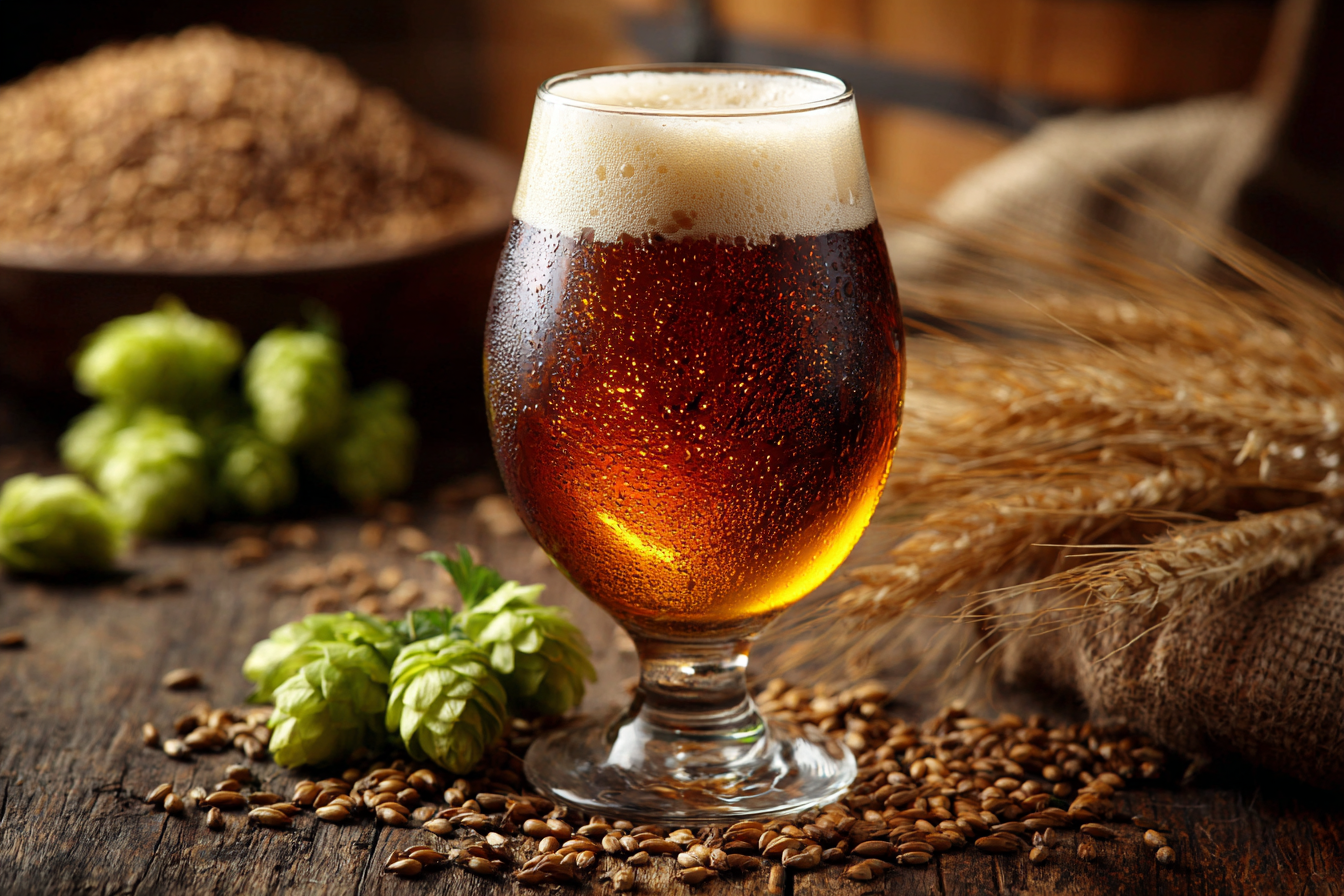Exploring the world of beer means diving into a tapestry of flavors, aromas, and textures that vary greatly among different styles. One style that has carved out a special place in the hearts of beer enthusiasts is the American Amber Ale. Known for its balance and versatility, American Amber Ale offers a unique flavor profile that combines rich maltiness with a harmonious bitterness from hops. Whether you are a seasoned beer drinker or just beginning your journey, understanding the distinct taste characteristics of this brew can enhance your appreciation and enjoyment.
Introduction to Flavor Profiles in Beer
Flavor profiles are essentially the combination of tastes and aromas that define a beer’s character. They arise from the interplay between the ingredients used—malt, hops, yeast, and water—and the brewing process itself. In beers like the American Amber Ale, flavor profiles are carefully balanced to deliver a multidimensional sensory experience. Malt imparts sweetness and body, hops introduce bitterness and aromatic notes, yeast can add complexity, and together they blend to create the beer’s overall identity.
Malt Characteristics in American Amber Ale
The backbone of an American Amber Ale lies in its malt bill. This style typically uses a blend of pale malt as the base and various specialty malts to add depth. These specialty malts often include caramel and crystal malts, which are responsible for the beer’s signature amber to reddish hues and rich malt flavors.
The malt profile brings forward notes of caramel, toffee, and sometimes biscuit or toasted bread. This malt sweetness is more pronounced than in lighter ales, but it is never overpowering. Instead, it anchors the beer with a smooth and slightly sweet foundation that creates a satisfying mouthfeel. The malt character also contributes to a medium body, giving the beer a well-rounded texture that feels both substantial and drinkable.
Typical Hop Varieties Used and Their Impact
While the malt shines in American Amber Ale, the hop selection plays an equally important role in defining its flavor profile. American hop varieties such as Cascade, Centennial, Amarillo, and Chinook are commonly used to achieve the desired balance and aromatic complexity.
These hops bring moderate to assertive bitterness that offsets the malt sweetness without overwhelming it. Beyond bitterness, they also impart distinctive aroma and flavor notes ranging from citrusy and floral to piney and resinous. For example:
- Cascade: Known for its bright citrus and grapefruit tones.
- Centennial: Sometimes called a super Cascade, adds floral and citrus complexity.
- Amarillo: Offers orange-citrus aromas with a hint of tropical fruit.
- Chinook: Brings piney, spicy characteristics with a touch of grapefruit.
The hop bitterness is carefully calibrated to provide a crisp finish that cleanses the palate and encourages another sip.
Balance Between Sweetness and Bitterness
One of the defining features of an American Amber Ale is its harmonious balance between malt sweetness and hop bitterness. Neither dominates, allowing drinkers to appreciate the interplay of flavors as they evolve from the first sip to the finish.
The malt sweetness provides a rich, caramel-like base that comforts the palate and offers a hint of sweetness. This is countered by a moderate hop bitterness, which adds freshness and brightness. This balance makes the beer highly approachable, appealing to those who enjoy flavorful beers without extreme bitterness or overwhelming sweetness.
Common Tasting Notes: Caramel, Toffee, Citrus, Pine
When tasting an American Amber Ale, certain flavor notes commonly emerge. These tasting notes stem directly from the malt and hops used in the brewing process:
- Caramel: A dominant malt-derived flavor that delivers sweetness and richness, often with a slight buttery quality.
- Toffee: A deeper, richer malt flavor that adds complexity and a smooth mouthfeel.
- Citrus: Derived primarily from American hop varieties, this adds brightness and lifts the overall flavor.
- Pine: A resinous, slightly evergreen quality that adds an earthy, aromatic counterpoint to the malt sweetness.
These notes blend seamlessly, making every sip a complex and enjoyable experience. Additionally, subtle hints of biscuit, toast, or light chocolate may appear depending on the malt blend used by individual brewers.
Serving and Pairing to Enhance Flavor
To fully enjoy an American Amber Ale, serving it correctly and pairing it with complementary foods can elevate the experience. This style is best served slightly chilled, around 45–55°F (7–13°C), which allows the malt and hop characteristics to be more pronounced.
In terms of food pairing, the beer’s malt-forward sweetness and moderate bitterness provide excellent versatility. It pairs wonderfully with:
- Grilled meats such as burgers, pork chops, and sausages
- Barbecue dishes featuring smoky and caramelized flavors
- Rich dishes like chili, stews, or roasted vegetables
- Cheeses such as sharp cheddar, gouda, and smoked varieties
- Sweet or spicy foods like honey-glazed chicken or spicy buffalo wings
The malt sweetness complements savory and caramelized elements, while the hop bitterness cuts through rich and fatty foods, creating a balanced taste experience.
Variations in Flavor Across Different Breweries
Though the American Amber Ale style has identifiable characteristics, flavor nuances can vary significantly across breweries. Each brewer’s choice of malt types, hop varieties, yeast strains, and brewing techniques imparts unique touches to the final product.
Some breweries may emphasize malt sweetness more heavily, resulting in a richer, almost dessert-like amber ale. Others might push hop bitterness to the forefront, creating a dryer, more crisp beer with pronounced citrus and pine notes. Additionally, the use of different yeast strains can add subtle fruity or spicy undertones, further diversifying the flavor profiles you can discover under the American Amber Ale banner.
These variations make sampling different versions of the style an exciting journey for beer lovers who enjoy exploring how subtle shifts in ingredients and process shape the beer’s personality.
Embracing the Complexity of American Amber Ale
American Amber Ale is a style that beautifully bridges the gap between malt-forward and hop-forward beers. Its appeal lies in its balance – offering malt sweetness rich with caramel and toffee alongside refreshing citrus and pine hop notes. This combination creates a beer that is complex yet approachable, flavorful yet easy to drink.
By understanding the components that contribute to its distinctive flavor profile, you can better appreciate the artistry behind each sip. Whether you enjoy it on its own or paired with food, the American Amber Ale is a versatile and rewarding style to explore, reflecting the innovation and diversity that American craft brewing continues to offer.







